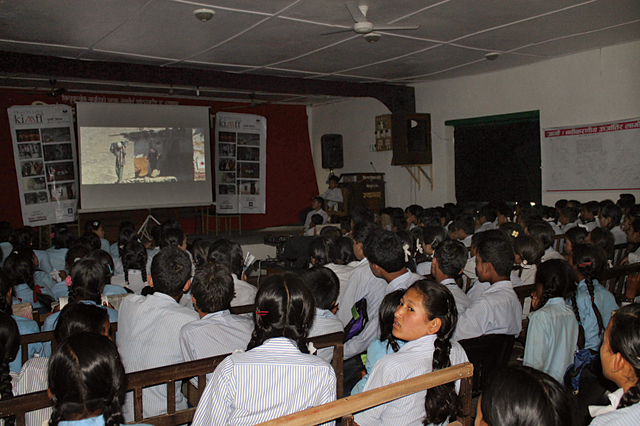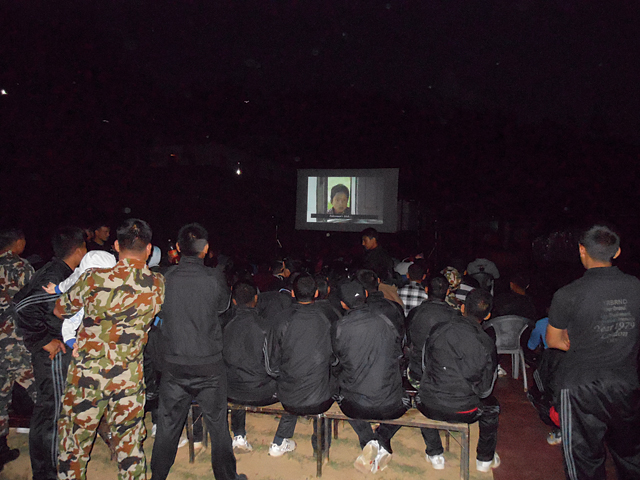In April 2013, the people of Chautara got a chance to learn about their own country thanks to the Kathmandu International Mountain Film Festival
When you envision a township just 80 kms away from the capital, you don’t expect it to be like a ghost town. But that’s exactly what Chautara, the district headquarter of Sindhupalchowk district, is like most of the year. The only time this place sees some activity is during festivals which is why the traveling package of Kathmandu International Mountain Film Festival (KIMFF) in April 2013 brought about some much needed change for the locals.

“The traveling package was special at Chautara this year,” shares Basanta Thapa, the chairperson of KIMFF. “We had special screenings of ‘Who will be a Gurkha?’ for the army barracks and after office shows for the civil servants.” Every year, KIMFF travels to various parts of Nepal showcasing the selected films (most of which are documentaries) in order to make the public beyond Kathmandu aware about the issues of the country. Films are one of the best ways to educate people for they are sources of entertainment as well as information. Basically, when KIMFF travels to a place, they partner with a local club or organization that takes care of the logistics and publicity. Films are screened for two days with three shows per day, unless there is a demand for more. For a place without a single cinema hall like Chautara, the source of films is limited to channels on TV that telecast Nepali and Indian cinema. Thus, as documentaries are a new format for them, information about the genre and the movie is given before the screening while interactions follow later.

Nine films were showcased at Chautara from April 27 to 29. The District Development Committee Hall was chosen as the venue and the local partner was the Federation of Nepalese Journalists’ members of Sidhupalchowk district. The movies shown were Who will be a Gurkha (2012), Journey to Yarsha (2011), Khatti Sun, Kadamandu (2012), Hari (2012), Bansuli (2011), Until When (2012), Extension of Pasture and movies from the Educating Nepal Project. Khatti Sun, Journey to Yarsa and the Educating Nepal films turned out to be the most popular of the lot. “The audience was touched. They learned about their own country through these movies,” recalls Thapa. “They wanted the films to be screened in the villages as well.” The festival saw an attendance of around 3,000 people that included army personnel, students, teachers and locals from Chautara and other villages of the district. A special after-office show was also organized after a request from government officials.

Although Sidhupalchowk is a growing tourism and development hub, Chautara remains untouched. Strangely, despite being the district headquarter, it is situated away from the highway. The KIMFF felt that the sleepy town was in dire need of promotion. “We try to help them learn about their own country through films. Most of the time, the audiences who come from far villages express their gratitude to us for giving them these chances. That’s how we make a meaningful contribution,” says Thapa. This contribution can be clearly seen when a place like Chautara comes alive because of events like Traveling KIMFF.
The Next KIMFF
Mid-December will witness the 13th edition of KIMFF from 11-15 December 2013 at Rastriya Sabha Griha (City Hall), Exhibition Road. Like every year, it promises to bring stories from all over the world. Apart from that, short stories on Why Poverty will also be showcased during the festival. To know more about the event, visit their website: www.kimff.org or call them at 977- 1-4440635











